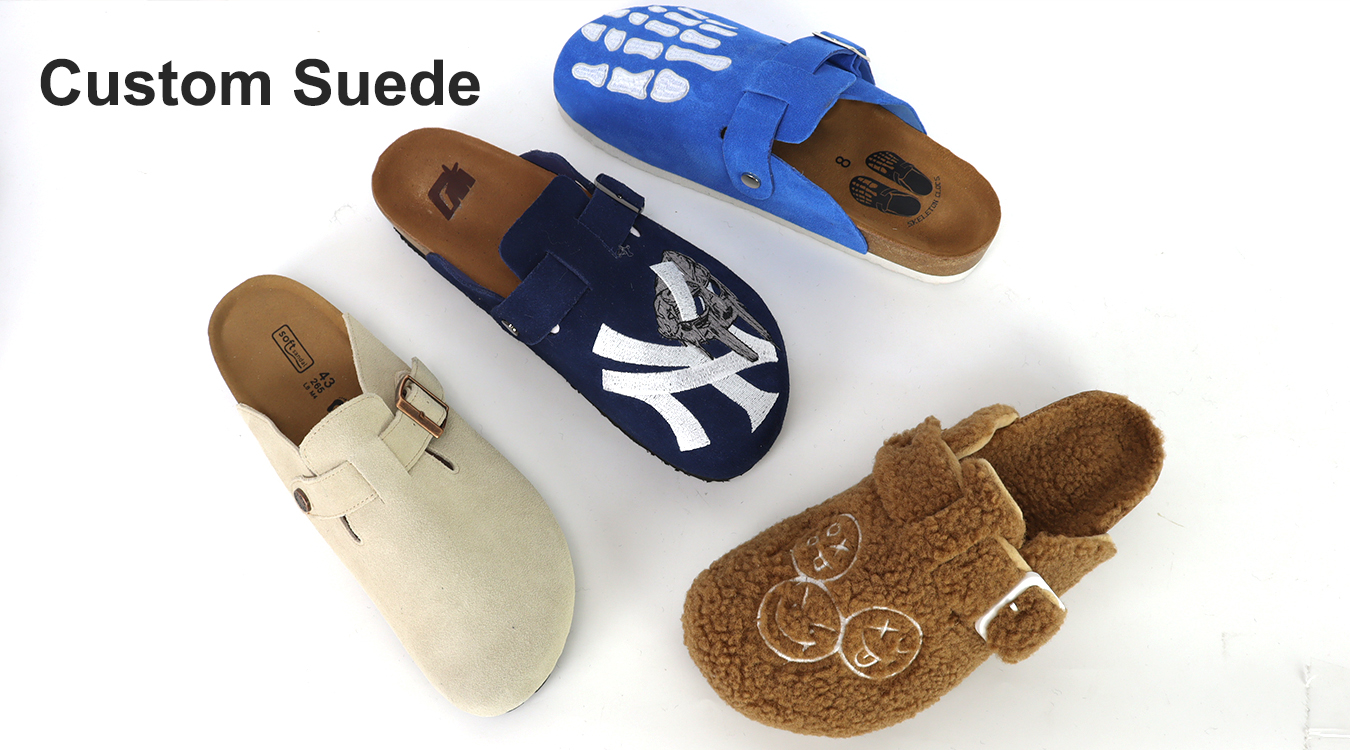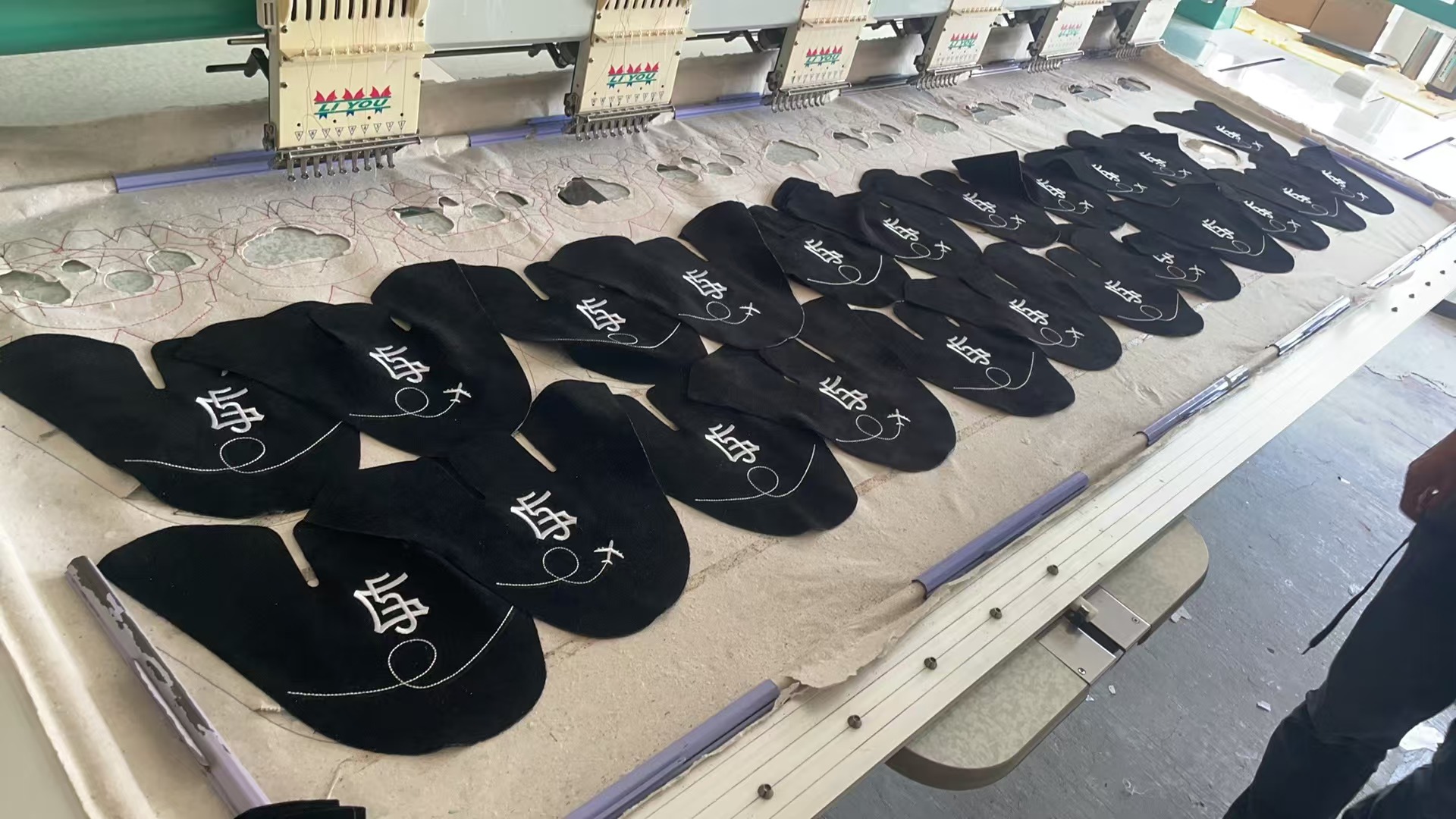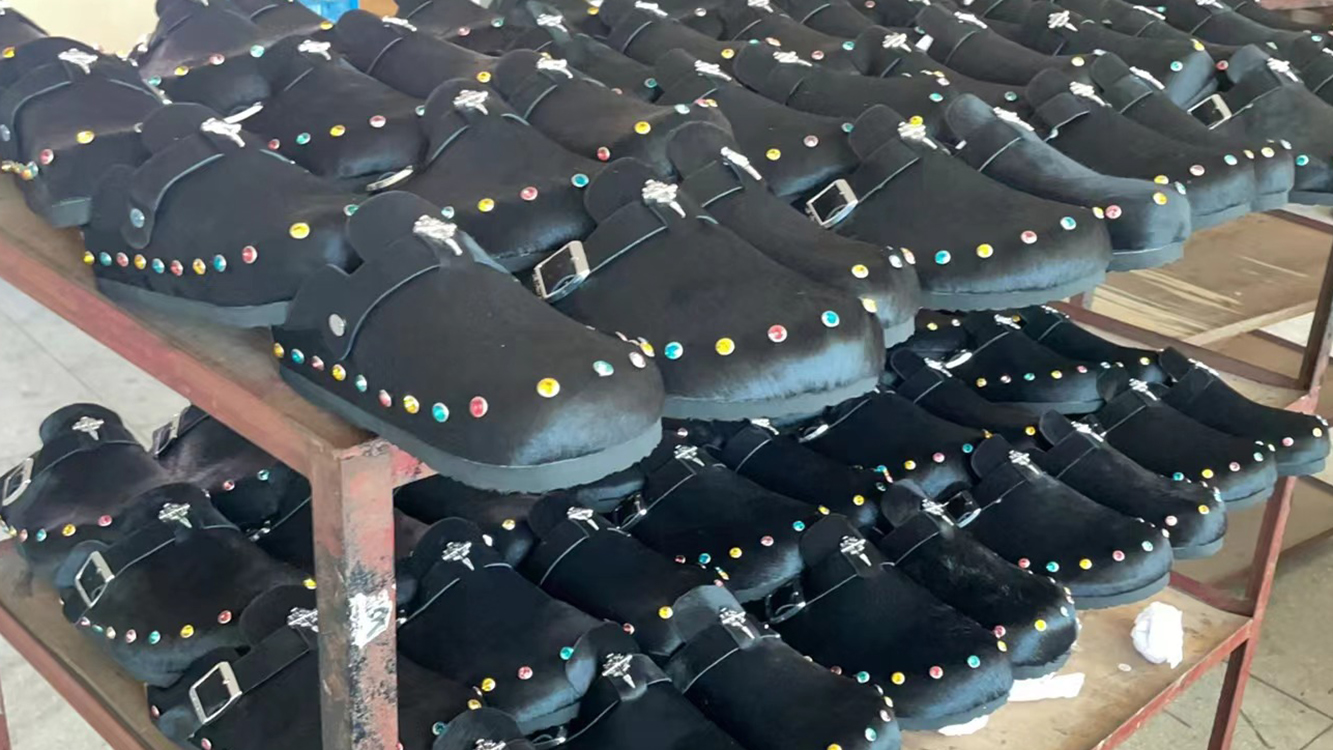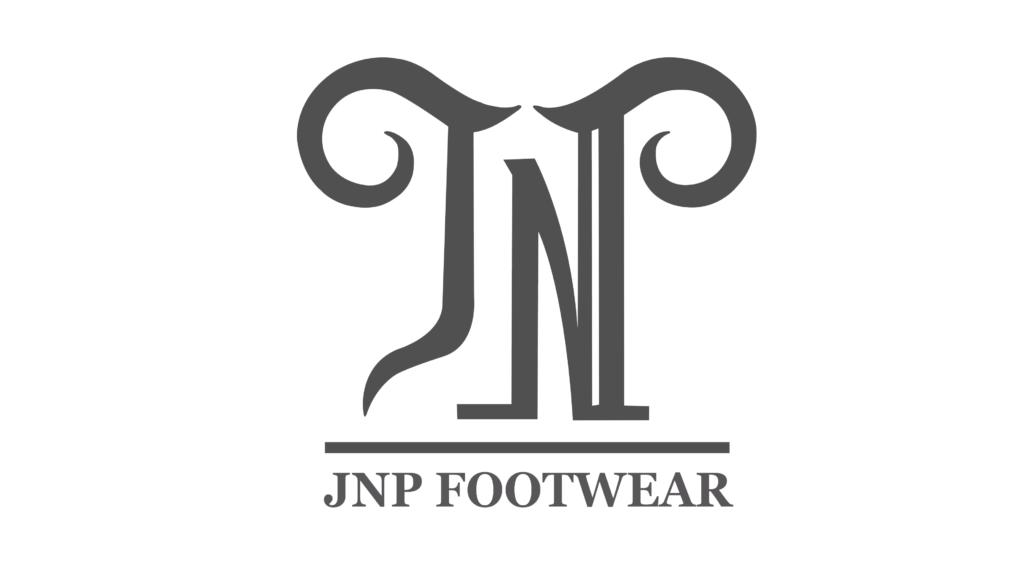
Want to launch suede clog slippers1, but struggling to make them feel unique or special?
To stand out, combine trending clog slipper silhouettes2 with custom suede colors3, eco-material options4, and detailed branding.)5. This makes the product not only stylish but also tailored to your brand’s identity.
I worked with a small U.S. brand that started with a classic slipper style, but once we tweaked the suede color and added a branded lining, it became their best-seller in two months.
[Table of Contents]
What makes suede clog slippers unique in the current market?

Buyers love suede clog slippers for their cozy look, but that also makes them feel too similar across brands.
Unique features include soft texture6, comfort fit7, and retro appeal8, but brands need fresh materials, shapes, or details to stand out.
To create a point of difference, we need to understand what’s already out there.
What’s standard?
| Feature | Typical Offerings |
|---|---|
| Upper Material | Faux suede, regular suede |
| Lining | Synthetic fleece or wool |
| Sole | EVA or rubber |
| Branding | Basic label or logo |
| Color Range | Neutral: brown, grey, beige |
These are safe choices—but they don’t create excitement.
How can you stand out?
You can stand out with:
- Custom-dyed suede3 in seasonal or brand-specific colors
- Embossed logos or woven brand tags5
- Eco-friendly lining or outsoles4
- Modern silhouettes2 with exaggerated proportions
These changes create visual interest and give your clog slippers a brand identity.
How do I customize suede clog slippers for my brand?

The real power of suede clogs is in customization—but not just logos.
Start with silhouette2, then color%20is%20standard.)3, then branding5. Treat the clog like a canvas. Don’t stop at just adding your logo.
Step 1: Pick a silhouette
Start with a base clog. Decide if you want:
- Closed toe or slightly open
- Back strap or backless
- Slim fit or chunky platform
Step 2: Choose materials and colors
This is where the look really changes:
- Suede Color: Seasonal pastels, bold hues, or earth tones
- Lining: Faux wool, natural wool, or printed fabric9
- Sole: Colored EVA10, cork-like finishes, or translucent rubber
Step 3: Add brand elements
This is more than just a label:
- Emboss logo on suede or sole
- Custom insole printing
- Woven pull tags
- Matching shoe box and packaging
With our [low MOQ](https://www.netsuite.com/portal/resource/articles/inventory-management/minimum-order-quantity-moq.shtml#:~:text=Low%20Minimum%20Order%20Quantity%20(MOQ,more%20frequent%20ordering%20and%20fulfillment)[^11] for custom runs, even small brands can launch unique clog slippers without big inventory pressure.
What design trends can inspire my clog slipper collection?
Following trends11 helps catch attention fast—but blending them with your brand is what sells.
Right now, popular trends include platform soles12, warm earth tones13, and mixed-material clogs14 that blend suede with wool or shearling.
Trend directions buyers are responding to:
1. Chunky and exaggerated
- Oversized platform sole
- Wide toe box
- Contrast stitching
2. Retro cozy
- 70s-inspired warm brown suede
- Cream fleece lining
- Cork-look soles
3. Nordic minimalism
- Light grey or beige suede
- Tonal lining
- Simple rubber outsole
4. Streetwear crossovers
- Bold colors (blue, orange, green)
- Logos printed on straps
- Custom shoe bags and boxes
These trends can be mixed and adapted based on your audience—young streetwear buyers, cozy minimalists, or fashion-forward lifestyle brands.
How do I balance small order quantities with high customization?

Small brands often think deep customization15 is only possible with big orders.
Our production model16 allows small MOQs with layered customization, helping brands stay flexible and creative.
Production Flexibility Table
| Custom Option | MOQ Range | Notes |
|---|---|---|
| Suede Color Dyeing | 300 pairs/color | Shared material use with similar orders |
| Logo Embossing | 100 pairs | Low setup cost |
| Printed Packaging | 200 units | Works well for gift boxes or promos |
| Mixed Style Orders | 50 pairs/style | Combine styles to reach total MOQ |
By splitting production among our partner factories17, we help brands like yours test new ideas without over-ordering. If one style goes viral, we’re ready to scale fast.
Conclusion
Custom suede clog slippers shine when you combine creative design with smart production. Start small, design bold.
Footnotes
-
Suede clog slippers are a popular cozy footwear style combining suede uppers with clog-like shapes, trending for indoor and casual wear. ↩
-
Clog slipper silhouettes refer to the base shapes—open or closed toe, with or without straps—essential to customizing unique designs. ↩ ↩ ↩
-
Custom suede colors allow brands to align footwear aesthetics with seasonal palettes or brand identities. ↩ ↩ ↩
-
Eco-material options like recycled lining or sustainable rubber outsoles are increasingly important for environmentally conscious buyers. ↩ ↩
-
Detailed branding—like embossed logos and custom packaging—boosts perceived value and brand recognition. ↩ ↩ ↩
-
Soft texture is a key tactile feature of suede that contributes to its premium appeal. ↩
-
Comfort fit refers to design choices (cushioning, arch support) that make slippers more wearable over time. ↩
-
Retro appeal captures the nostalgic design trends popularized from the 70s–90s, which resonate with current buyers. ↩
-
Printed fabric lining can subtly display branding or fun motifs, adding uniqueness inside the product. ↩
-
Colored EVA soles are lightweight, customizable, and trendy, often used in lifestyle shoes. ↩
-
Design trends provide inspiration for seasonal or fashion-forward collections that resonate with target audiences. ↩
-
Platform soles are thick, elevated soles that offer a bold silhouette and extra comfort. ↩
-
Earth tones—like beige, tan, and rust—are neutral and trending, aligning well with lifestyle fashion aesthetics. ↩
-
Mixed-material clogs combine different materials like suede, wool, or synthetic blends for textural contrast. ↩
-
Deep customization refers to fully tailoring the design beyond surface branding—shape, materials, and finishing. ↩
-
Flexible production models allow small-batch manufacturing with diverse customization options. ↩
-
Partner factories allow for diversified production and faster scaling across styles and orders. ↩

